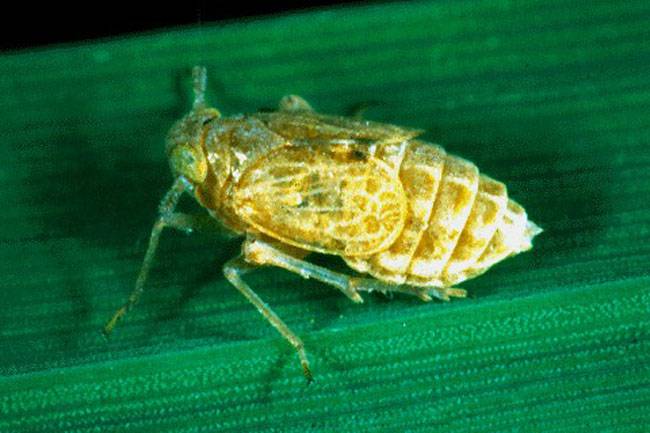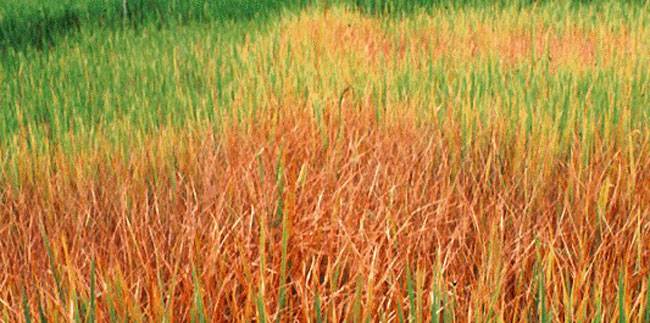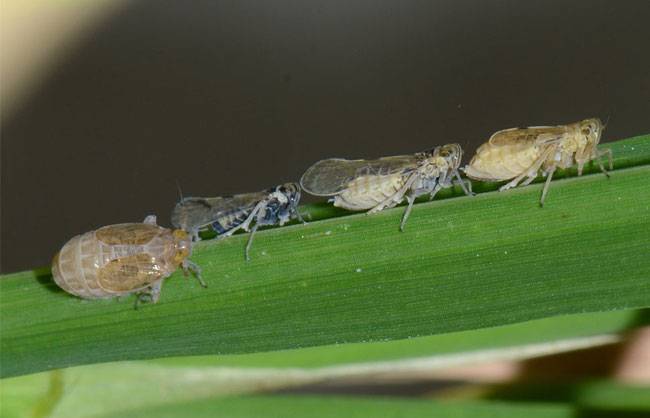The brown planthopper (Nilaparvata lugens), a devastating pest in Asian rice fields, poses a significant threat due to its direct damage and role as a vector for viral diseases. Below is a brief overview:
Key Characteristics
Lifecycle and Feeding:
- Nymphs and adults suck plant sap, weakening rice plants.
- Egg masses are laid in the midribs of leaf sheaths and blades, blocking xylem and phloem.
- Feeding leads to "hopperburn," where plants turn yellow, dry out, and die.
Dispersal:
- Long-winged macropters emerge when food resources are scarce, dispersing to colonize new fields.
Symptoms of Infestation
- Hopperburn: Yellowing and drying of leaves, starting at the tip and progressing to the base.
- Honeydew secretion on plants, often leading to sooty mold fungus.
- Chlorosis and reduced grain yield.
Impact on Crops
- Direct feeding reduces vigor and productivity.
- Acts as a vector for:
- Rice grassy stunt tenuivirus
- Rice ragged stunt oryzavirus
- Late-stage hopperburn significantly reduces grain ripening and yield.
Favorable Conditions for Outbreaks
Environmental Factors:
- Close plant spacing and high-tillering varieties.
- High nitrogen fertilization.
- Good water management without rice-free periods.
- Staggered planting and continuous cropping.
Climatic Influence:
- Extreme high or low temperatures reduce nymph survival and egg production.
Management Strategies
Cultural Practices:
- Ensure synchronized planting to avoid overlapping generations.
- Maintain a rice-free period between crop cycles.
- Avoid excessive nitrogen fertilization.
Resistant Varieties:
- Use planthopper-resistant rice varieties.
Water Management:
- Avoid continuous flooding that encourages pest multiplication.
Monitoring and Biological Control:
- Deploy light traps to monitor population density.
- Encourage natural predators like spiders, mirid bugs, and parasitoid wasps.
Chemical Control:
- Use insecticides judiciously, considering pest population thresholds.
Lifecycle and Characteristics
Egg Stage:
- Females lay 100 to 500 eggs in the midribs of leaf sheaths and blades.
- Eggs are white initially and darken as they near hatching.
- The egg stage lasts 7 to 11 days.
Nymph Stage:
- There are five nymphal instars, all feeding on the phloem sap of the host plant.
- Nymphs have triangular heads with pointed vertices and a creamy white body tinged with brown.
Adult Stage:
- Adults vary in color from yellowish-brown to brownish-black.
- Lifespan ranges from 10 to 20 days, influenced by seasonal conditions:
- 18–24 days (June to October)
- 38–44 days (November to January)
- 18–35 days (February to April)
Brown planthopper infestations result from a combination of agronomic practices and climatic factors. Integrated Pest Management (IPM) strategies are essential for mitigating their impact and safeguarding rice productivity.




